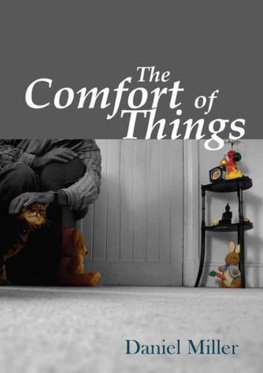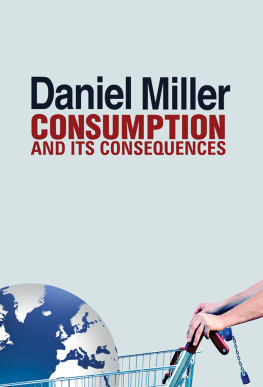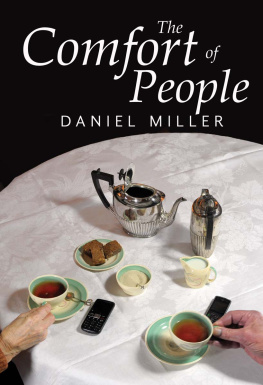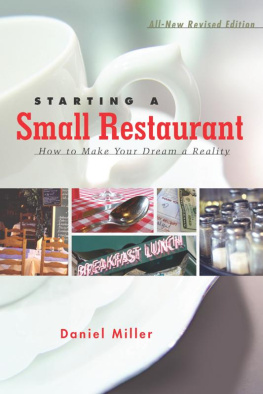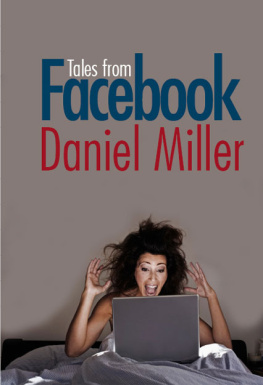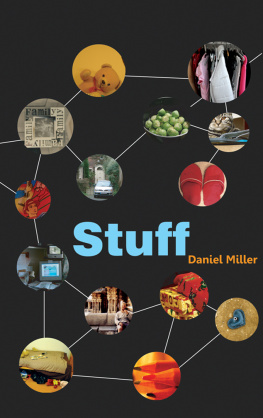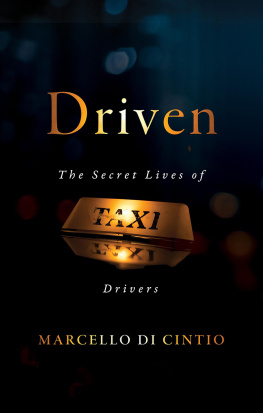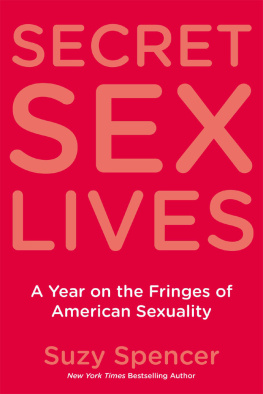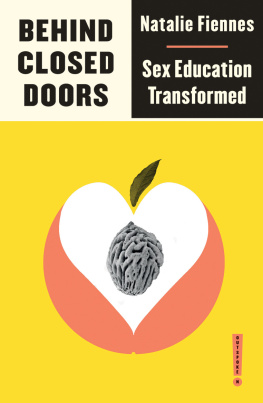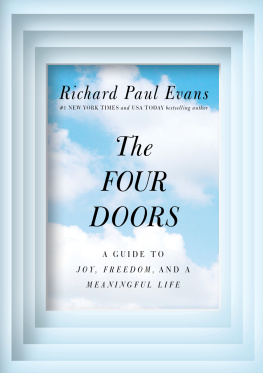A PPENDIX
THE STUDY
The material upon which these portraits is based lends itself to several possible academic studies. The original research project was an investigation of the way material culture helps people deal with loss and change. This is intended to be the subject of another volume to be written in collaboration with Fiona Parrott. We also hope that our research can yield benets relevant to the welfare of this population by helping professionals to understand how we can learn from observing individuals own efforts to alleviate or express feelings of loss using their everyday material culture. The present book is an addition to our initial intentions and grew out of a desire to demonstrate that the humanity of the people we encountered in the street could be revealed by their material possessions. The epilogue is offered more in the spirit of philosophical anthropology.
There is absolutely nothing special about this South London street, where Fiona Parrott and I carried out research for a year and a half. Its a slightly odd task to look for a place which has no particular features and offers you no reason to choose it. But not a hard one. Most streets in London appear from the outside to be pretty ordinary. We had some criteria for selecting the place we have called Stuart Street: a location we could both travel to without taking too much time, and with a mix of properties implying a range of incomes. Stuart Street seemed to t the bill. There are a few larger properties that are still family homes, although others are divided into ats. There is also plenty of what was once council property, now mainly owned by housing associations. Then there always seemed to be some building or painting work going on, which signied gentrication. By and large this is the kind of area people move into when they form couples and out of when they have children. This is reected in the composition of the portraits, although, such is the diversity of housing, that every kind of household is likely to be represented to some extent.
At rst we were pleased to have chosen such a long street, which promised a good mix of inhabitants, but within a few days the downside of this selection became apparent. At that time we didnt know anyone well enough simply to ask to use their loo, and the pub was closed during the day. So, initially, we were desperate to nd people to interview, to gain access to their bathroom as much as to their insights. Knocking cold on strangers doors has always lled me with terror, so perhaps this extra incentive helped. Gradually things improved. As we went from knowing ten, then forty, then nally one hundred people, it became more a case that we couldnt walk for ve minutes without meeting people we knew and stopping for a chat. At this period we could be found inviting people for drinks in the pubs, going out for meals with them, helping to carry shopping as they pushed the buggy down the street, popping in and having a cup of tea, or asking the people we knew to help introduce us and vouch for us to their neighbours. Chatting was now rather about catching up with the latest developments in their lives the job interview, the persistent illness, the new relationship. Fiona started to go almost every Sunday to one of the churches in the street, and then took up residence in a shared house on the street itself, while I continued to make the trek from North London.
Not all the people who feature here became friends to the same degree. Many remained within the connes of more formal interviews, people too busy to see us otherwise. But after seventeen months even the local corner shopkeepers admitted that we seemed to know more people on the street than they did, and we felt we had been able to achieve the kind of relationship which approximates to the anthropological ideal: an ethnographic study of an area. Yet the street as such hardly features in this book. Each portrait seems to be a separate encounter with a separate household. This is because, while we may have come to know a great many people on the street, in the main they did not know each other. They just lived by juxtaposition.
The research method, based on a single street, replicated a previous study I had carried out also with a PhD student, Alison Clarke. That study had concerned itself with shopping, the way peoples acquisition of objects helped one understand love and care in families. On that occasion I used the method in order to avoid selecting people as tokens of categories and to include the sort of people who might never otherwise be selected for inclusion in research. This time I wanted to move from a study of how people acquire goods to one focusing on how they relate to loss. For this purpose I formed a team with Stephen Frosh, an expert in psychoanalysis, and with Clive Seale, a specialist in death, both personal friends, in order to try and obtain a grant. We failed completely. So I can reassure you that no research grant was used up or harmed in the course of my research. But, about a year later, an MA student at my department, Fiona Parrott, heard about the proposal and expressed an interest in undertaking precisely a study of this kind. So, I decided to dedicate to this task such time as was not spent teaching. We started by carrying out twenty pilot studies with a variety of people ranging from friends to other students.
Our primary research was carried out for seventeen months, with more intensive eldwork in the summer. It was completed in September 2005. Then in order to ensure academic autonomy, Fiona Parrott started on an independent thesis, under separate supervision, on the topic of the relation between objects, photographs and memory, following completion of which we plan to write up the initial research topic on the role of objects in helping people to cope with loss. In the meantime, it seemed that the richness of our encounter could lend itself to a different genre of writing one intended to share our experience with a much wider readership and also to introduce more generally the branch of anthropology I teach: material culture studies. So this present book is intended to demonstrate how one can understand people through the medium of their things. The term things is used loosely; the focus can be on the house itself, or living things like a dog.
In all but two cases, the thirty portraits presented here come from our eldwork in and around Stuart Street. The other two derive from our pilot study of twenty cases, simply because I couldnt bear to leave them out. Also, the term street is a slight misnomer. We included the little side-streets off the main Stuart Street as part of the project, and, on occasion, people we had met on the street itself, but who lived a couple of streets away. Nevertheless, this is not a ctional block of ats or neighbourhood; the people I describe here are real-life Londoners.
As well as trying to make this book a good read, I have also tried, where appropriate, to convey something about the manner in which the research was carried out. Within the text there are many examples of the struggles involved and of the tentative nature of my analysis and interpretation. Although several of the portraits are presented as life stories, this is not how we received this information. We concentrated on the possessions in the house. But such was the richness of background material that it has been possible to recast it subsequently in the manner of life narratives. The depth of these encounters varies hugely. In some cases we would meet these people often and we came to know them very well over many months; but in other cases, the portraits are drawn from just one or two in depth interviews, which happened to focus on a particular relationship with objects that seemed important to convey.

